Helping Aaron – A Vintage Computer Adventure
This article was originally written for and published at Philly 2600 on December 23rd, 2013. It has been posted here for safe keeping.
It’s rare that I get overwhelmed. I’m not talking about stress or anything like that. It’s rare that my senses get overwhelmed, specifically my sense of sight. This past Saturday, that sense became overloaded.
I’ve known Aaron for a little while now. We met online somehow in 2012, and while I don’t remember the exact details, I think he started following me on Twitter and things went on from there after I followed him back and we started replying to each other’s tweets. We quickly figured out that we lived pretty close to one another, which I found humorous considering we were both into archiving and preservation. Who would think that I’d be geographically this close to another person who idles in the #archiveteam IRC channel, online headquarters for the team dedicated to rescuing any and everything in the way of data? Aaron and I hit it off pretty well, and we eventually ended up meeting (somewhat unexpectedly) at Pumpcon 2013. Later, I ran into him again at the BSides Delaware conference and shortly thereafter he started coming to the Philly 2600 meetings which I’ve been frequenting for some time.
About two weeks ago, Aaron approached me via an online message and asked if I would like to go through some old computers at a local nonprofit he is on the Board of Directors for, NTR. NTR is in itself a fantastic organization which provides both refurbished computers (done in-house from donations) and hands-on computer training to low-income Philadelphia residents. If you are employed by or know a company in the area that is retiring their current fleet of workstations, consider donating the old machines to NTR. And, if they ultimately cannot use the machines, they will ensure that they are recycled in an environmentally safe fashion.
Aaron thought that I would be the right guy to help out. Being someone that preserves old technology, rescues it from unknown fate, and is a general enthusiast about it, I couldn’t resist the urge to come out and see what I could uncover. The details I got about what I was to do left a lot to my imagination. I got a location, we settled on a time, and I was told to wear clothes I wouldn’t mind getting dirty and bring a set of work gloves. Hardhats would be provided.
The dirt and grime never bother me. Just what I would be working with, I didn’t know. But, I was excited nonetheless and on the morning of Saturday I walked on over to NTR and met Aaron out front. The building we would go on to enter was the former site of the hackerspace The Hacktory before they moved to a larger location. The building itself is a big old warehouse that is much larger inside than it looks from the street. The parking lot to the side is encased with giant stone walls almost as high as the building itself and easily fits a dozen cars without having anybody blocked in. Aaron tells me that the building has also been declared a historical site, meaning they can’t do a lot of modification to it directly, but they do keep it nicely maintained.
As Aaron lifts one of the giant metal doors encased in the building’s western wall, I get my first look into NTR. He shows me bins of donated computer equipment: smaller stuff like peripherals lovingly stacked in re-purposed milk crates and small amounts of desktop computers stacked together up the side of the two-story wall. I get a tour of all the classrooms, a look into the computer thrift store they run out of the same building, and dozens of other rooms and hallways that wind around the giant space, separated by heavy opaque sliding doors. Eventually we make our way into the main computer storage area where there are pallets upon pallets of donated machines on giant shelves that Aaron points out to me with a flashlight. It’s dark in this part of the building.
We then go up to the second floor to see Stan, who is the Executive Director Emeritus of the organization, having initially been the Executive Director starting in 1980 and taken on the Emeritus title more recently. Stan himself is energetic and charismatic and goes on to tell me about how he set up a community information store on South Street in the 1970’s as we head down to where we came in to the building to the relatively new looking wooden steps that will lead to the area that Aaron and I will be looking through for the next few hours. Aaron later explains that much like me, Stan has been collecting and preserving technology and computer history, though he has been doing it for considerably longer. Some of his collection is also mixed in with the stuff we will be digging through.
I put on my gloves and snag a hardhat out of milk crate on a shelf by the stairs before Aaron and myself head up. The stairs are steep and don’t seem to be spaced consistently. You feel like you could fall down them easily but the railing is firm enough to keep you steady. As we make it to the top, I peer into the sea of computers which I will be acquainting myself with, lit by a pair of metal lamps that are clipped on to the wide beams of the underside of the roof–an afterthought in this ~20 foot space.
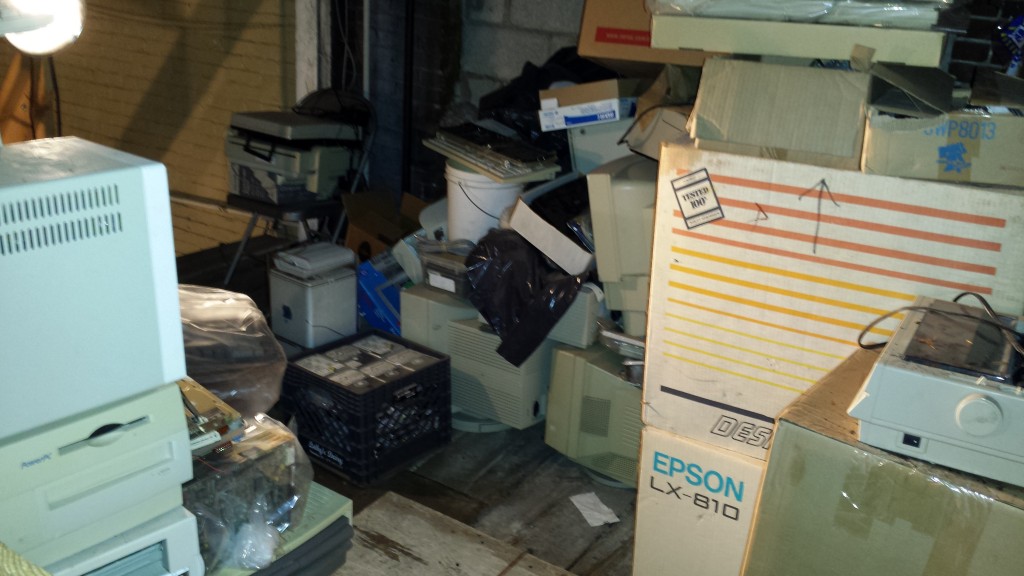
A shot behind me after I made my way off the stairs.
I quickly realize I can’t stand up all the way and have to hunch over, but that isn’t nearly as assaulting as the dust that comes out from seemingly everywhere and permeates through the air thick like smoke. Aaron walks slowly forward with his flashlight in hand and I follow close behind as he points out different areas of the space. We see newer stuff like a few Dell servers and stacks of Intel-based PCs at first but as we go further in we take more steps back in time. Aaron shines his light on a pile of all-in-one Macs before going further to the more interesting artifacts. On the left are some more modern machines, followed by boxes upon boxes of various documents, computers, and peripherals. I see Kaypros with Commodores with IBM clones and crazy displays for systems I can’t even fathom. There are tons of Macs, a few Mac clones, Apple ][s, and some old portable computers the size of suitcases. There are bags of electronics: half finished projects from decades before, muddled in with 8-bit personal computers, a pile of Sun workstations, and boxes of 5.25" floppy disks. On the right side are more Macs: G5s, G3s, a dozen classic Macs, some older desktops and a seemingly endless collection of obscure monitors and terminals to other systems. This is where we start.
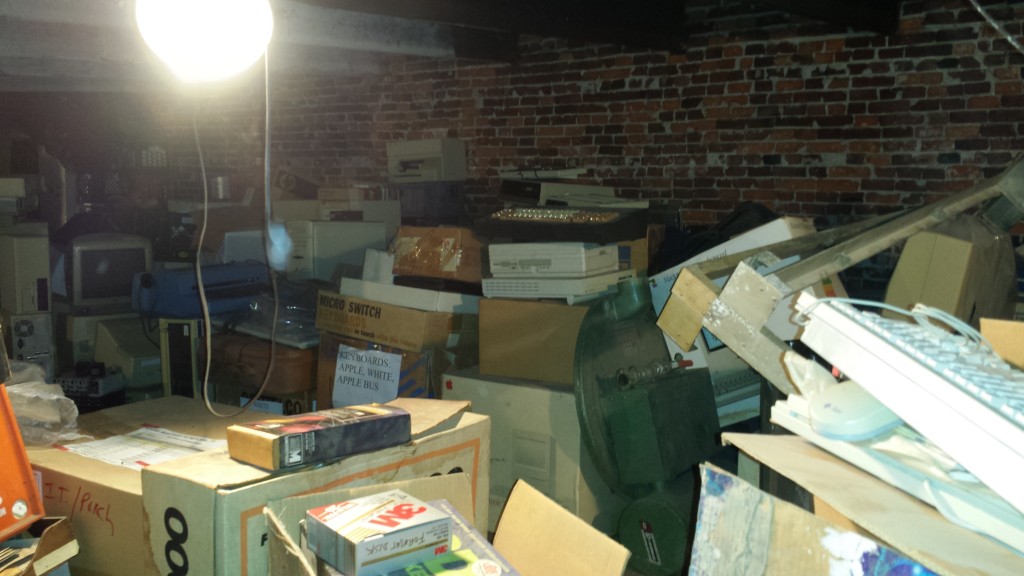
A view of the left side.
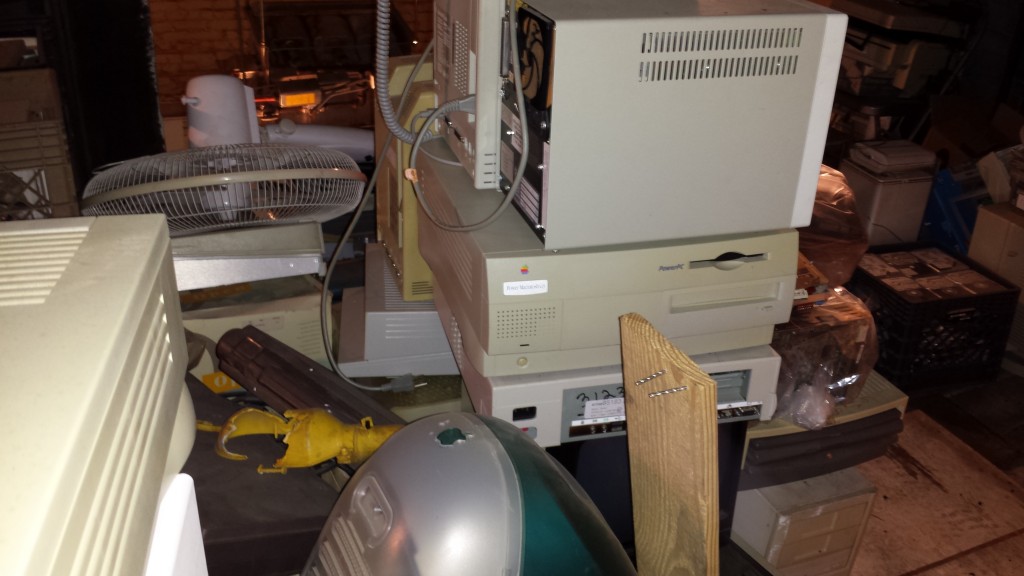
A claustrophobic shot of the beginnings of the right side.
We navigate down the narrow path separating the space straight through the middle and get acquainted with the Mac area. We line up rows of milk crates and start digging, sorting along the way. Put the classic Macs here, put modems in this bin, mice in that bin, terminals over here, MIPS-based hardware over there. We sort and sort and sort, moving the heavy machines slowly as we work another path into the mess. The day was a cold one, but we quickly discarded our jackets as we carried hardware along the narrow aisle we carved–we were warm enough simply moving back and forth, ducking beneath low-hanging beams and swiveling around waist-high stacks that created our own personal obstacle course. As we went, we stopped to appreciate anything interesting we happened to find. Almost immediately we come across a monitor for a NeXTcube (though we didn’t find the cube itself) and we dug up other odd monitors and software packages and interesting little add-on boards that most people have probably long forget. We pooled our expertise and our energy and sorted in a long sprint.
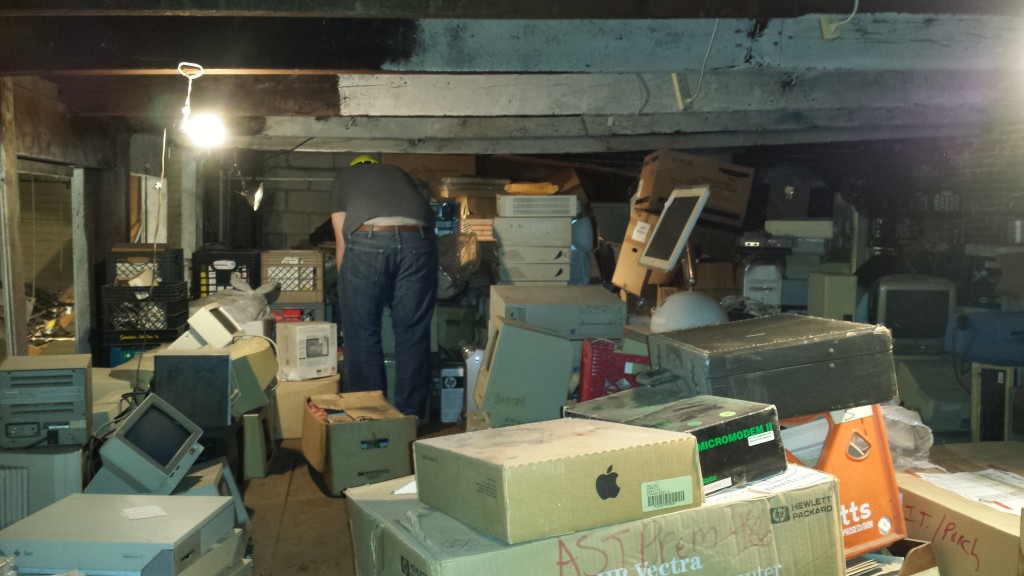
After we cleared a new path.
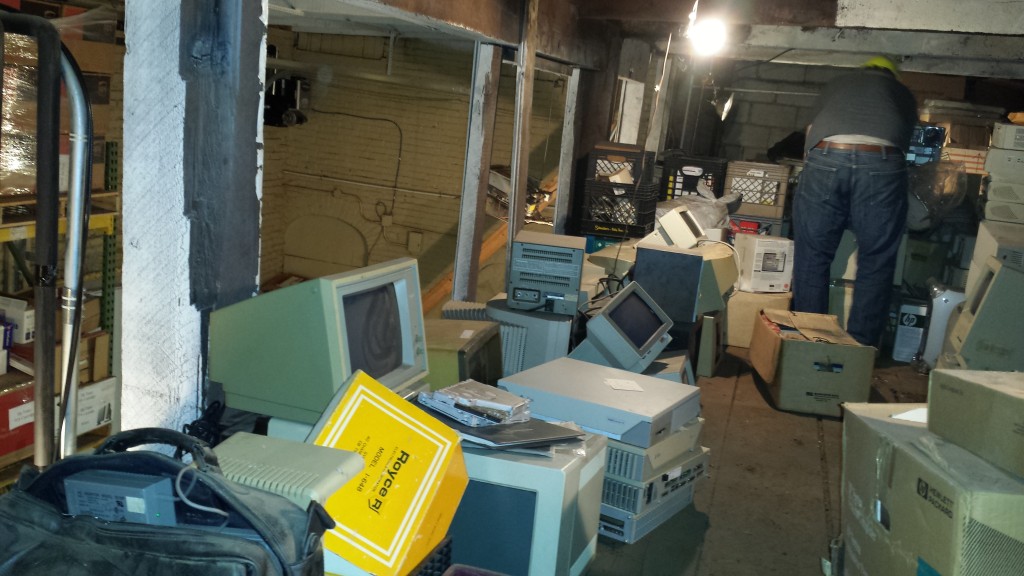
Cleared path continued.
Aaron told me that a lot of this stuff will ultimately be cleared out. The newer stuff didn’t necessarily belong there and could be assimilated downstairs or recycled while the less valuable systems would be readily sold at their retail store. Some of the rarer pieces would be donated to museums or sold to enthusiasts and collectors who appreciate them to ensure their longevity. I hope when the time comes I might fit into this last group. The amount of history in this room is simply breathtaking.
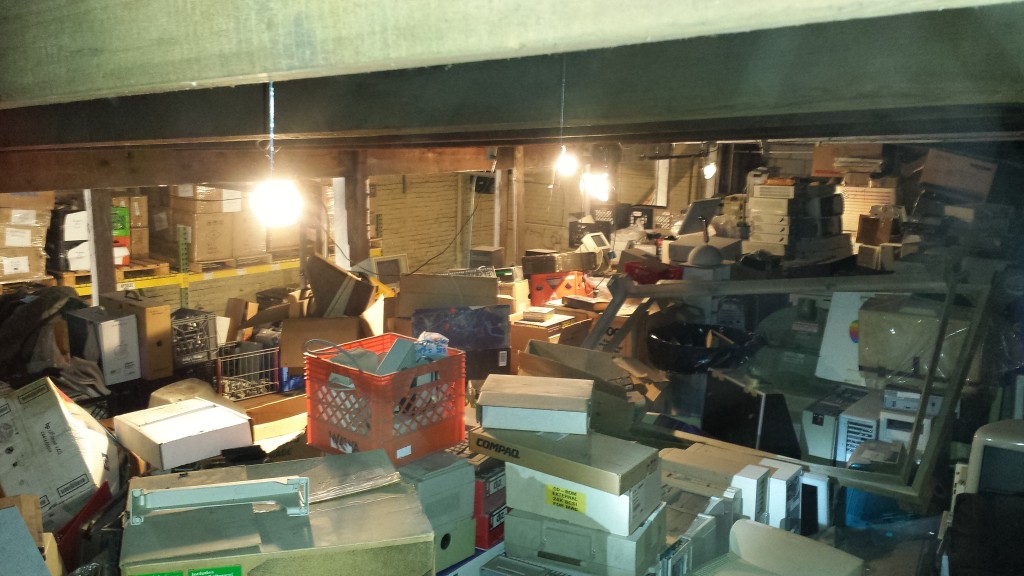
View from the far corner.
After a brief break, we pushed back against the section we were using for trash so we had more room to sort. Ultimately, we successfully cleared space more terminals and bins upon bins of manuals–hard copies are always under-appreciated. We then moved around, more slowly, to some of the more obscure hardware, testing a few things as we went. More time in this stretch was just spent digging as opposed to organizing. We wanted to see what was in some of the giant boxes at the bottoms of the stacks. We didn’t want to leave any stone unturned. Who knows what would be tucked away? We sorted through some IBM clones, found an Amiga 2500, a Wang Terminal, a Vector Monitor, a Silicon Graphics Indy, a whole mess of Kaypros and some more interesting items like a computer for those with disabilities and a strange keyboard or computer that neither of us could quite figure out. Down below us, people were trickling in for a computer class in one of the many rooms. “Who here has internet access at home?” I heard an instructor ask before I accidentally knocked over a PowerPC Mac. Hopefully they didn’t mind the noise.

Delta Data IV “Cherry.” Keyboard or 8-bit computer?
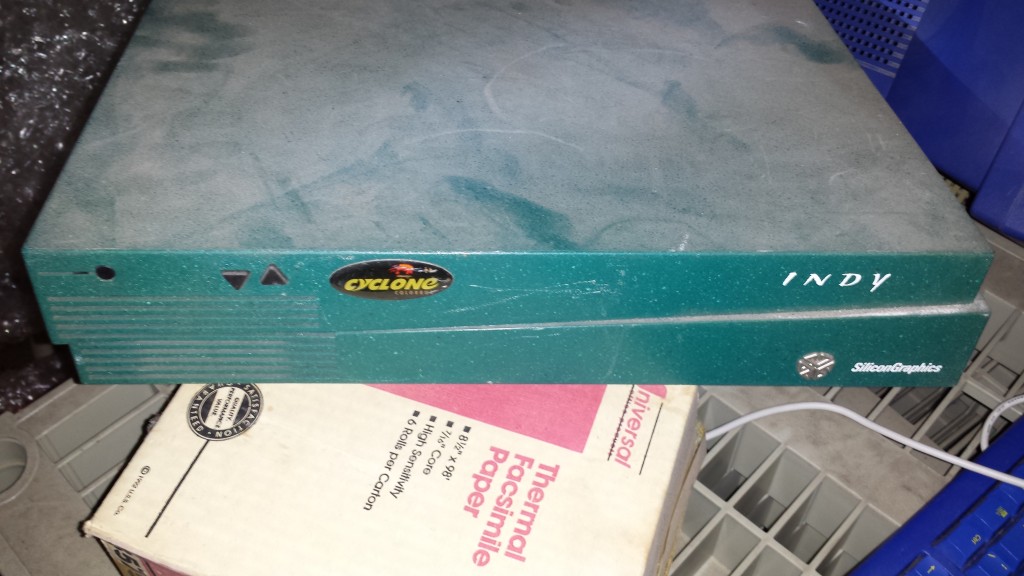
SGI Indy.
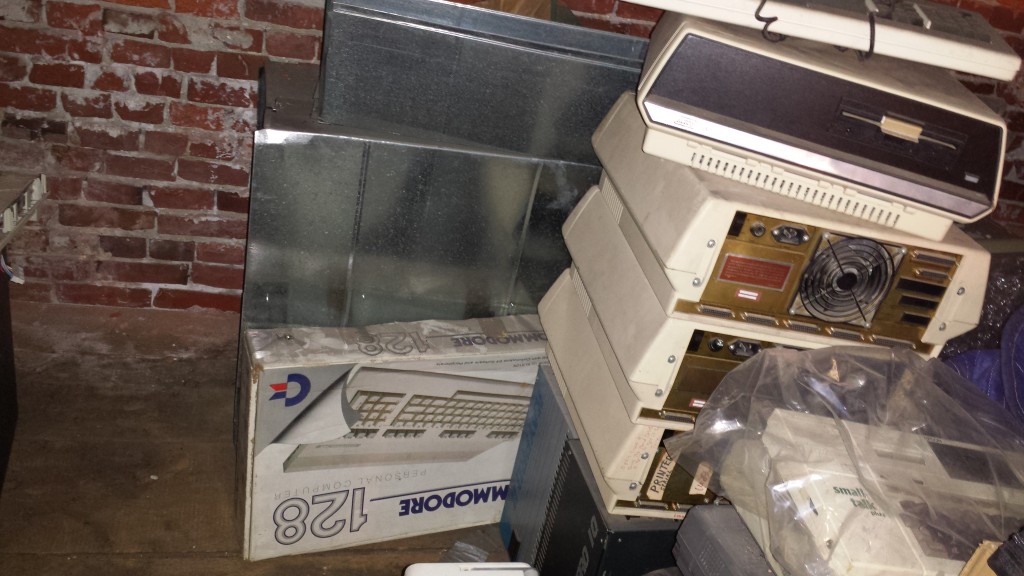
Stack of Altos 580’s on some Kaypros next to a Commodore 128.
We finally succumbed to the tech and called it quits for the day. We got a good idea of what was up in the area and talked about the next steps which are likely to be inventorying and testing (though there can probably be some more organization in the meantime). The space itself serves as a fantastic time capsule and it is a breath of fresh air to know that some of the stuff in there is just in there–and in good condition. However, there is much to be done and many more hours to devote to make sure everything is handled properly.
As we rounded out the end of our excavation, we threw down the hardhats and unhanded the once-clean work gloves before walking around the corner for a cup of coffee. As we took our first steps away from the building, I felt a sense of accomplishment. We were archaeologists returning from our first day at an excavation. We uncovered some great finds, having fun along the way.
With any luck, I’ll be asked back. There’s a lot to go through and I can’t help but think that there’s more I can offer. Never before had I been able to lay my hands on some classic pieces of hardware that I had only read about, and it was quite an experience being able to put the pieces together.
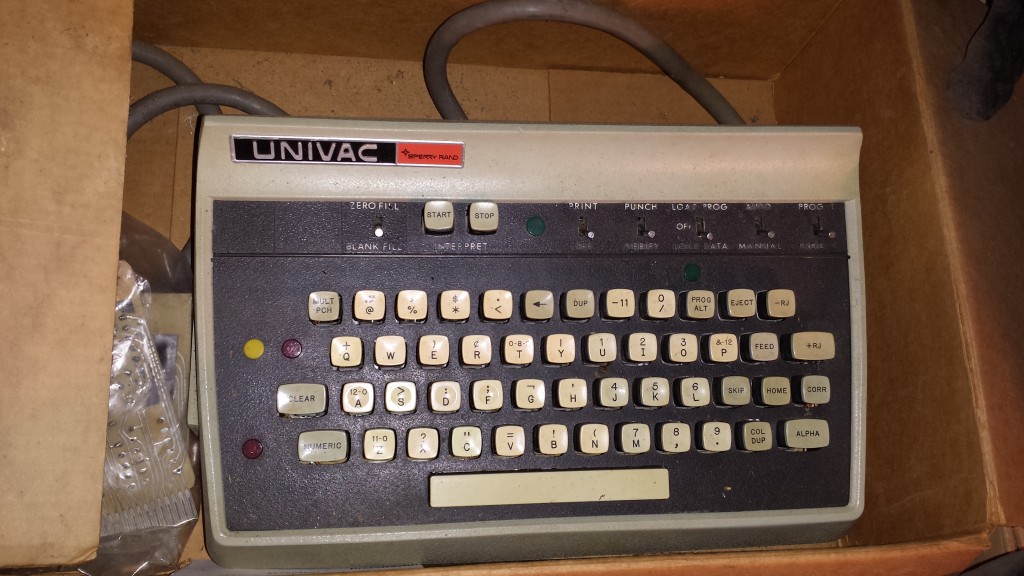
Univac / Sperry Rand keyboard.
“Age means nothing today,” Stan told me earlier that morning. “In this day and age, things are moving so fast.” I can’t say that I disagree, but I consider myself lucky to have the experience and knowledge under my belt when it comes to vintage computers.
And with any hope, I can keep expanding it.

A shot of the left side from out path in the Mac section.
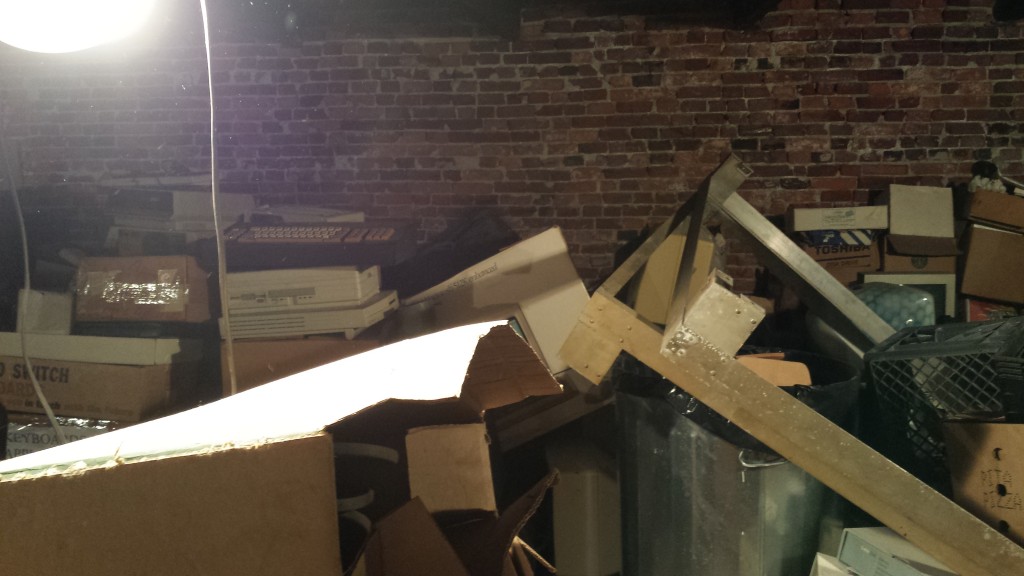
Another shot of the left side.
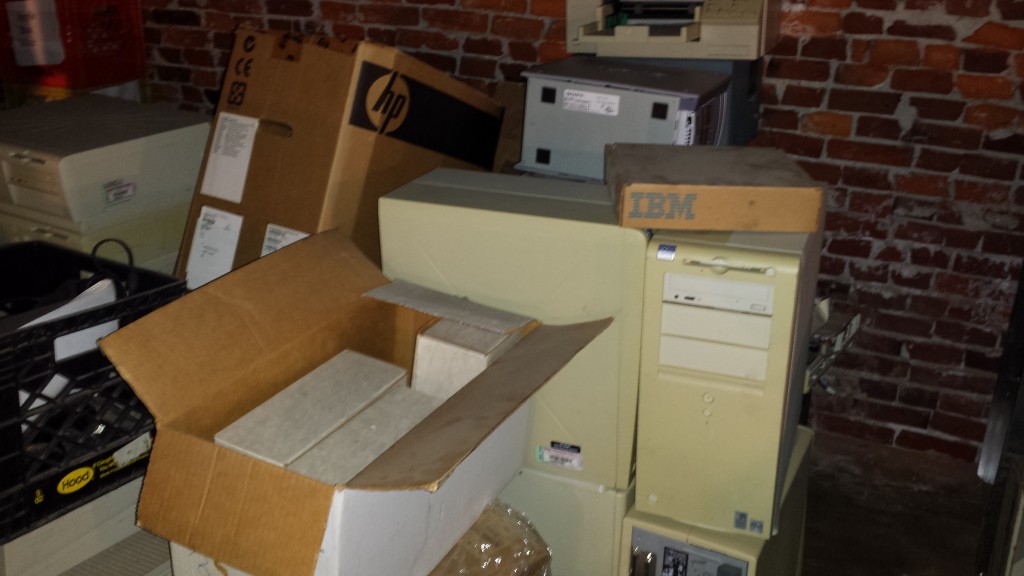
Some newer Intel-based PCs.
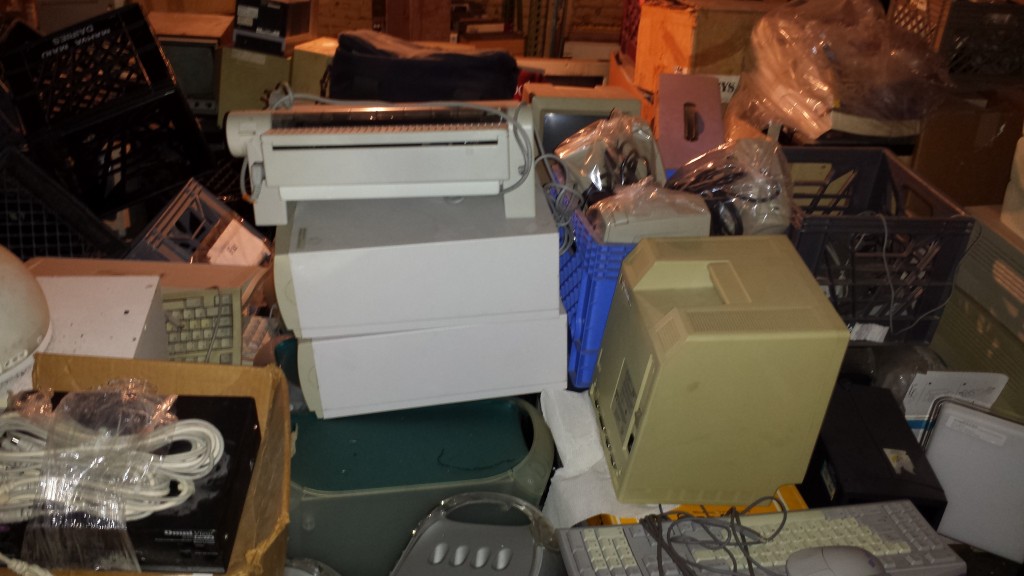
More of the Mac area.
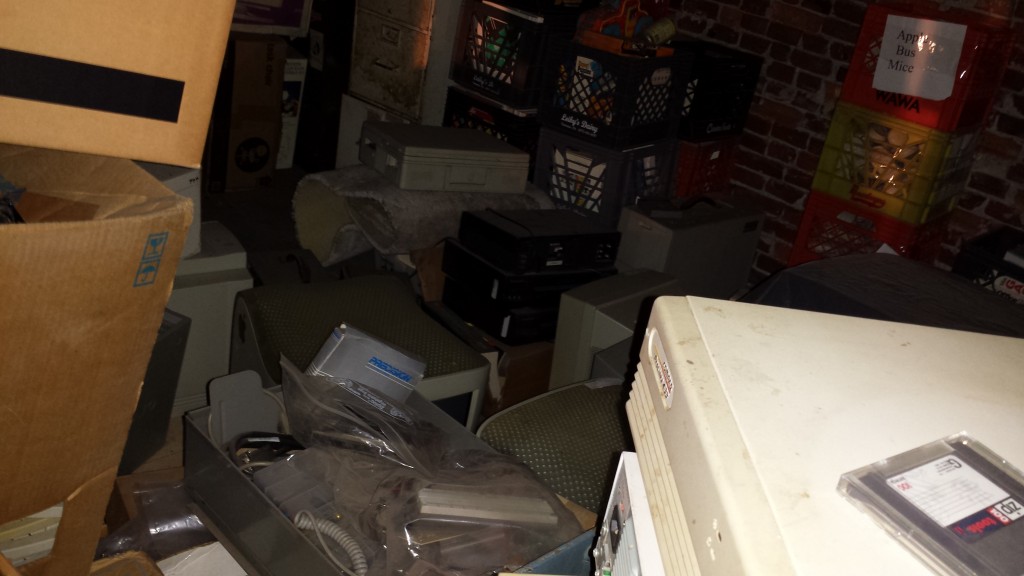
Newer computers tucked away.
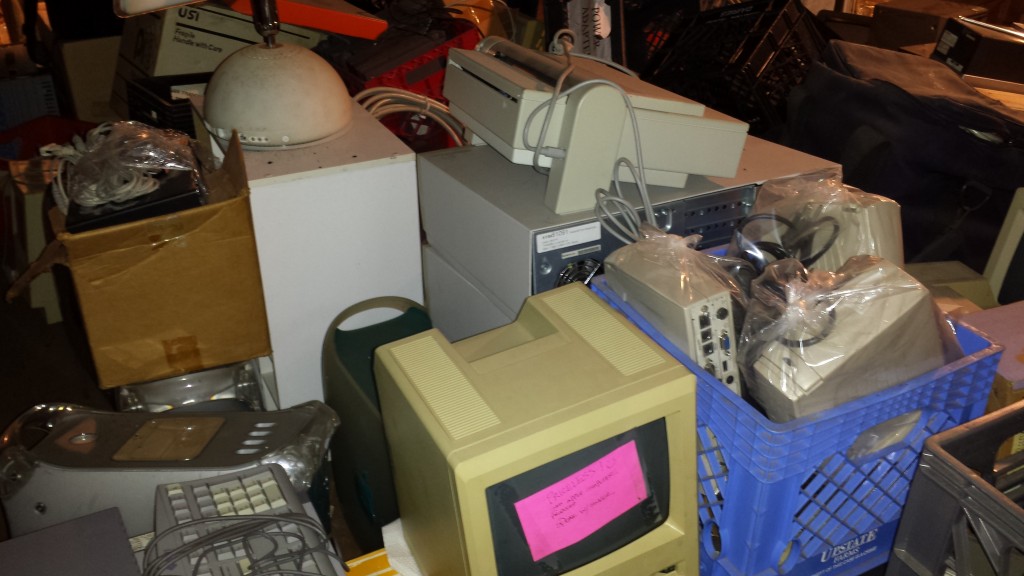
More Macs, pink note states that this Mac was the second produced.
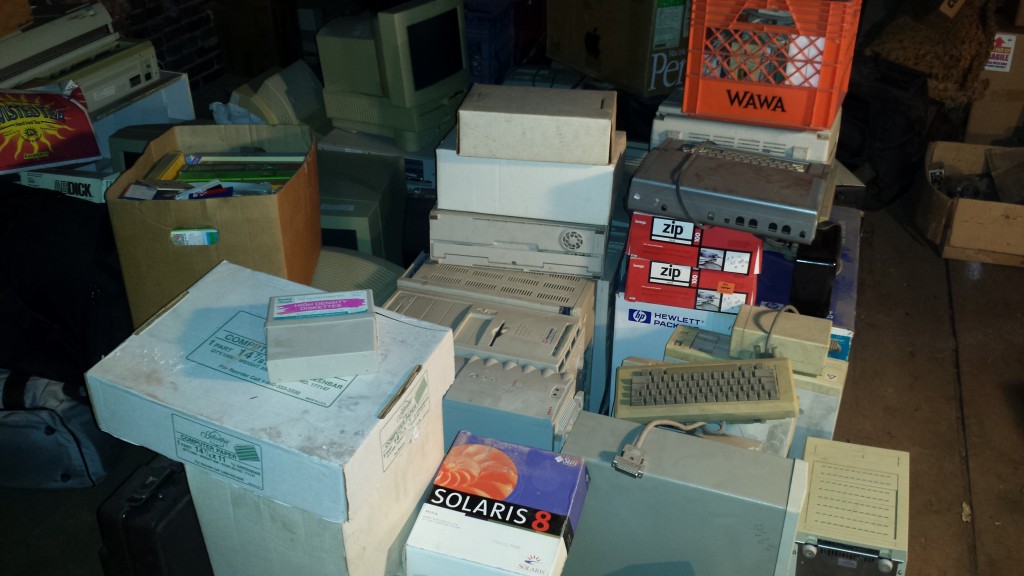
Sun workstations, Macs, Apples, old laptops.
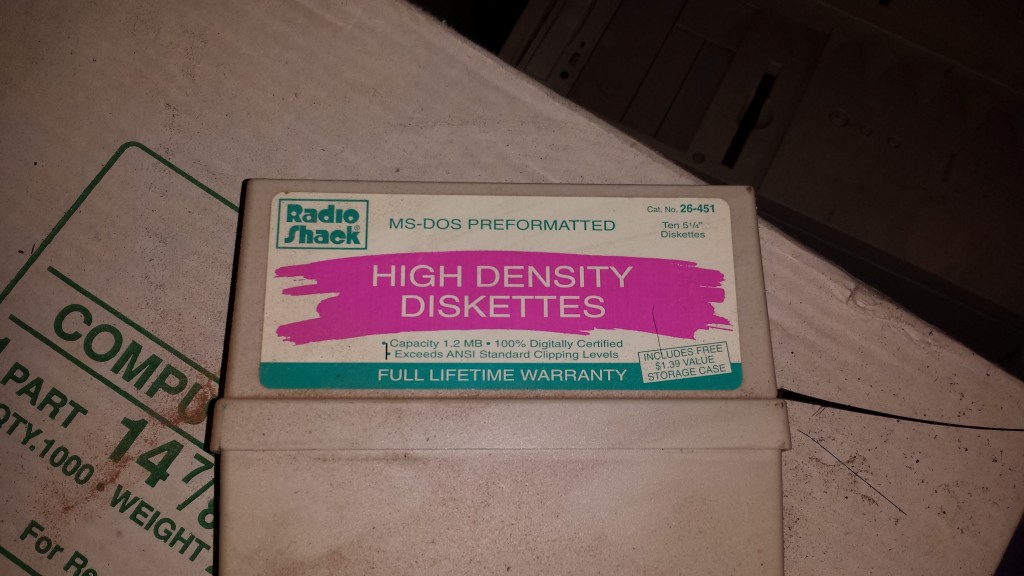
RadioShack diskettes. Think the warranty is still good?
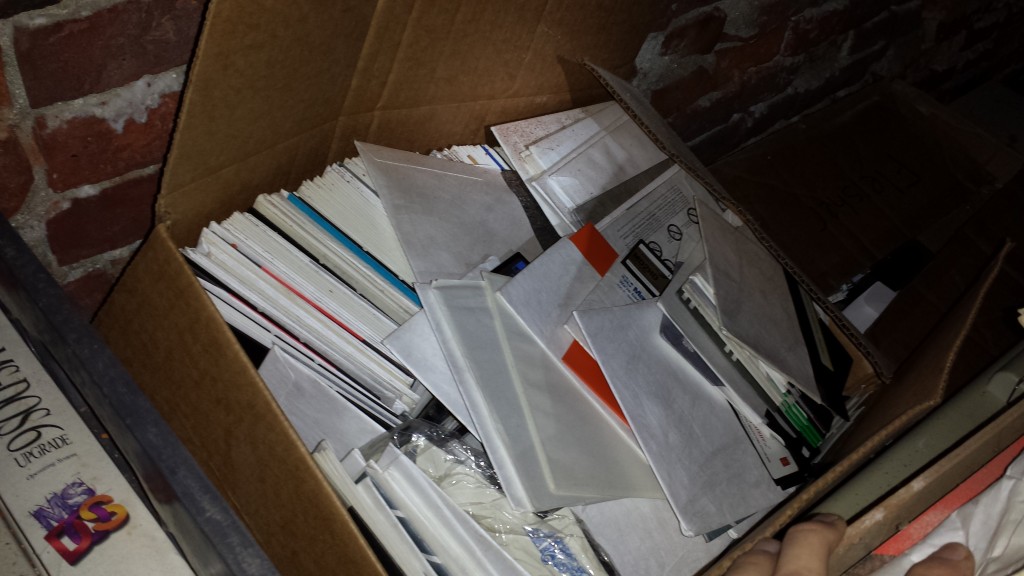
5.25" diskettes.
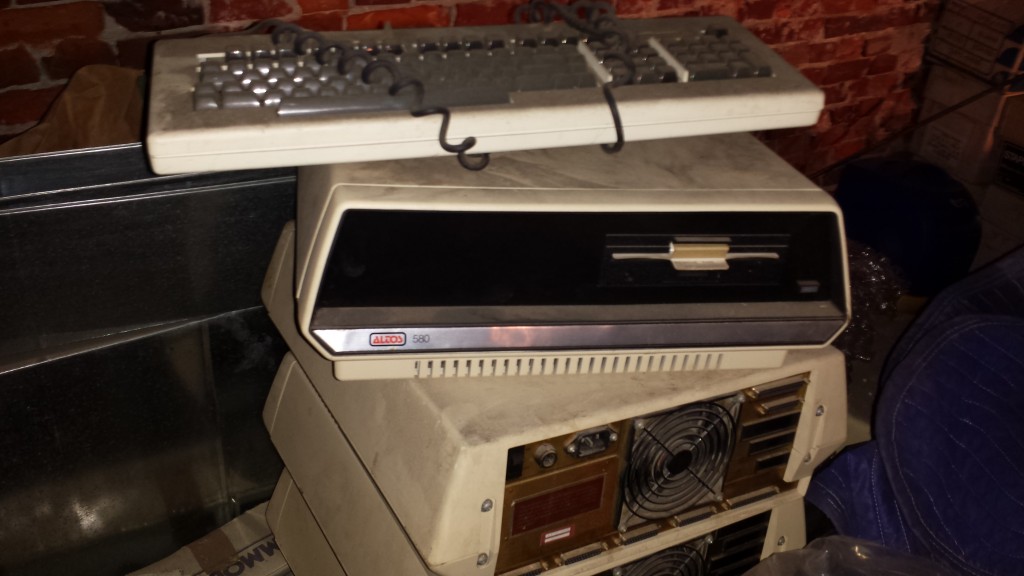
Close-up of the Altos 580s.
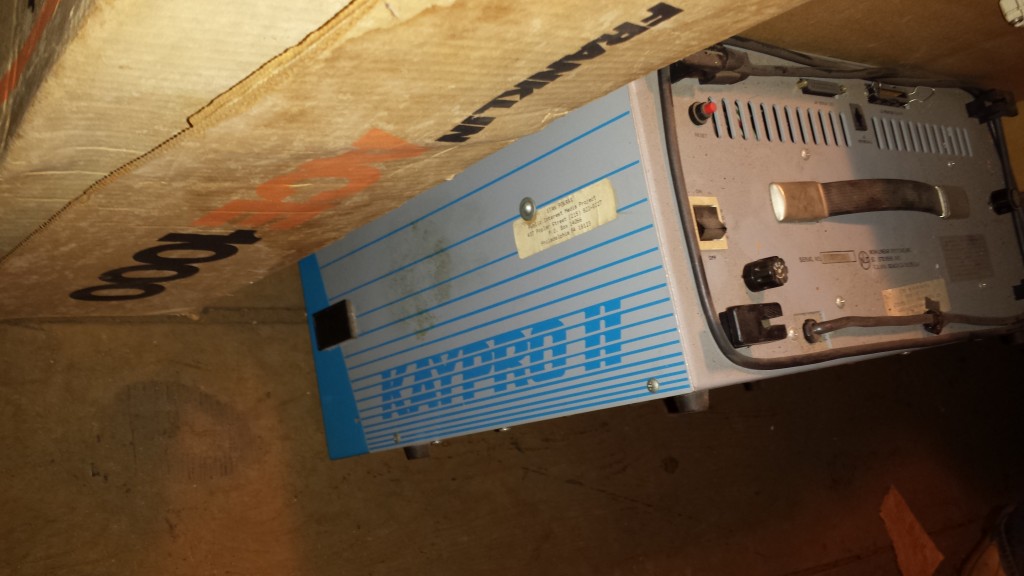
A lone Kaypro II.
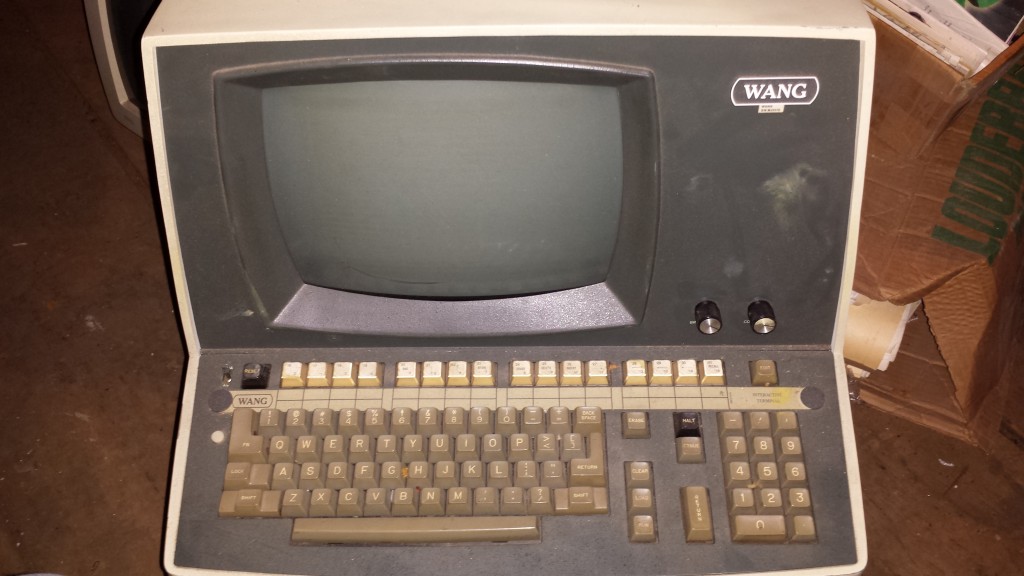
Wang terminal.
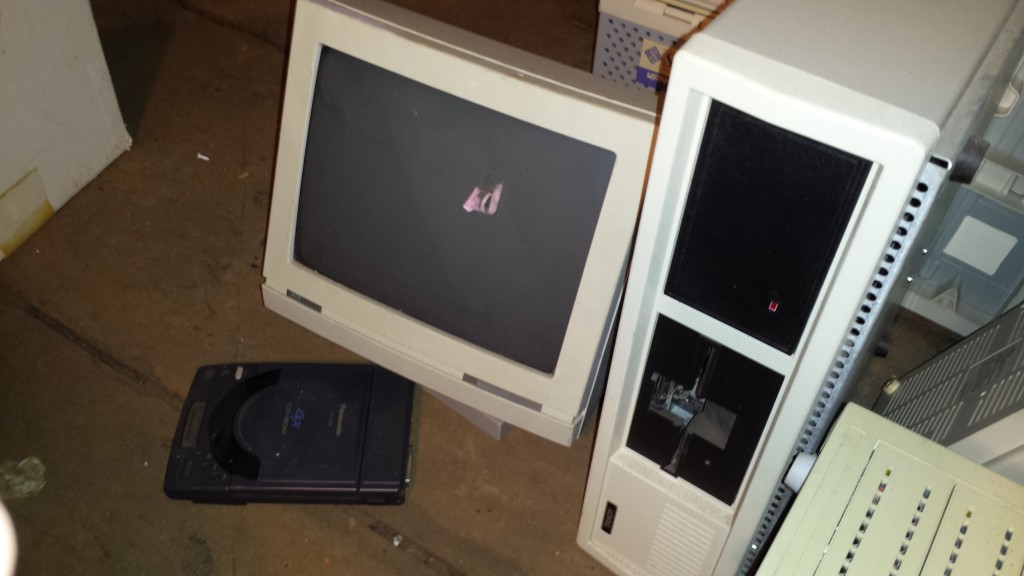
A Tandy and a terminal.
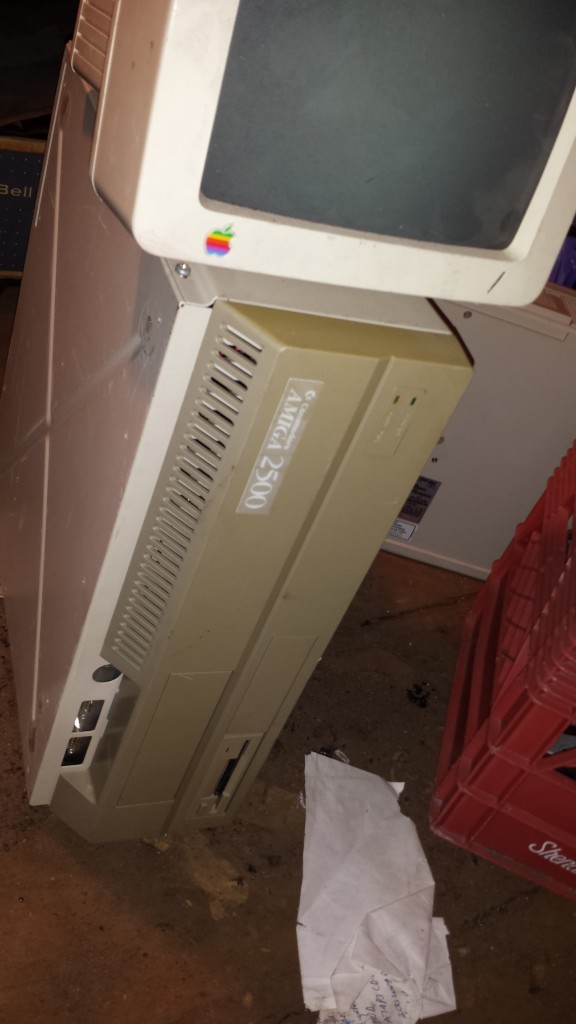
The Amiga 2500 and an Apple monitor.
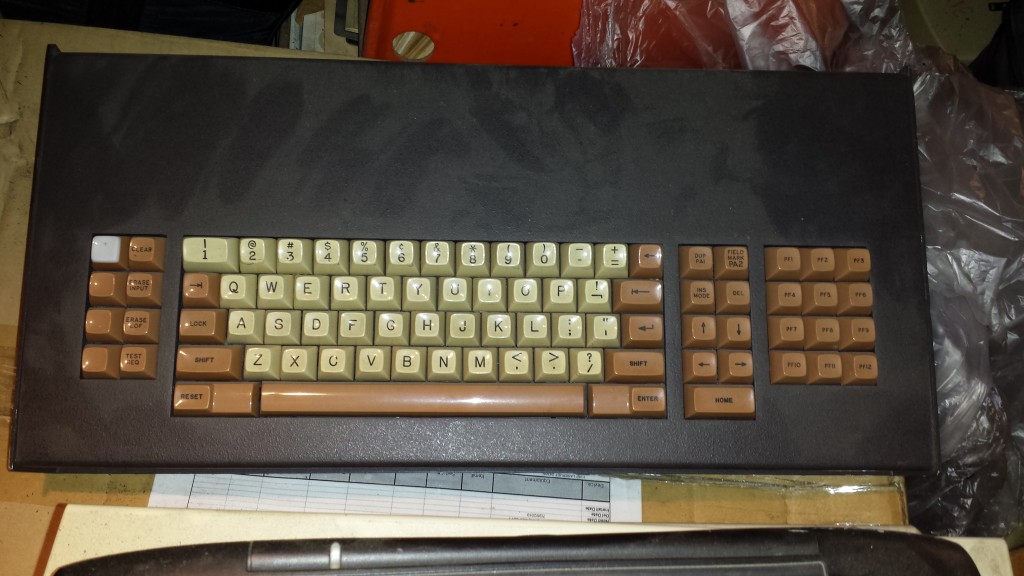
Unknown brand keyboard.
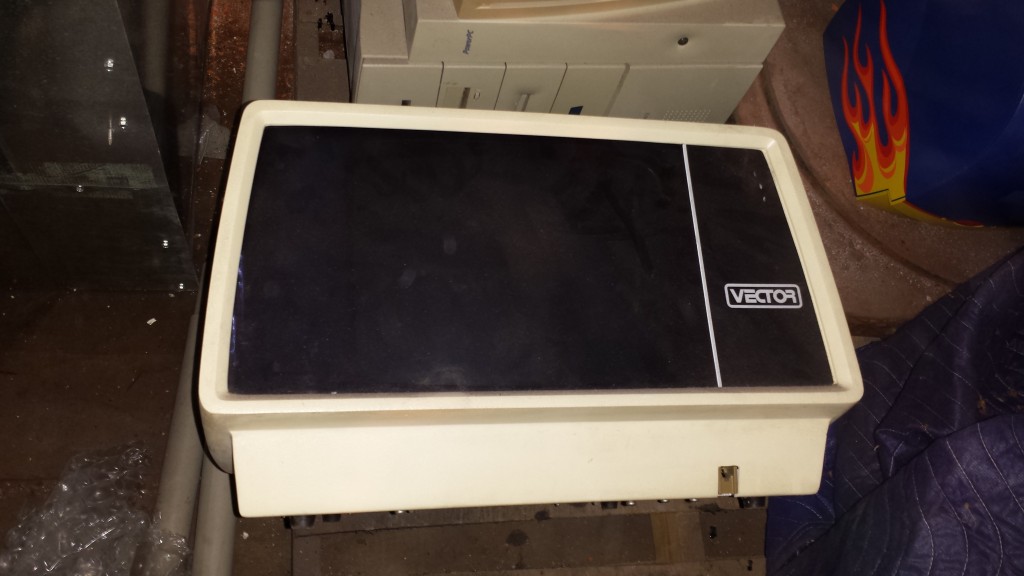
Vector display.
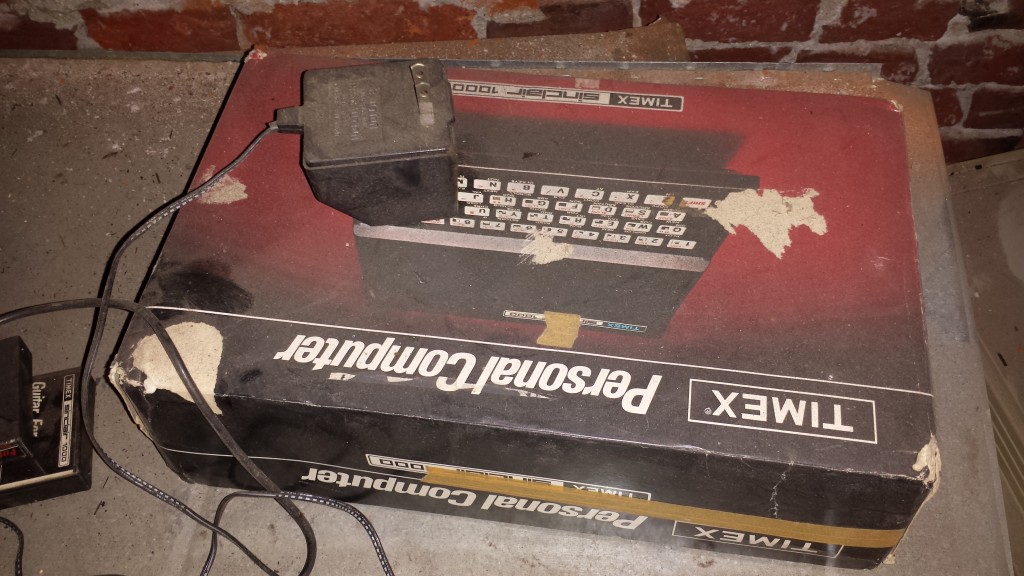
Timex personal computer.
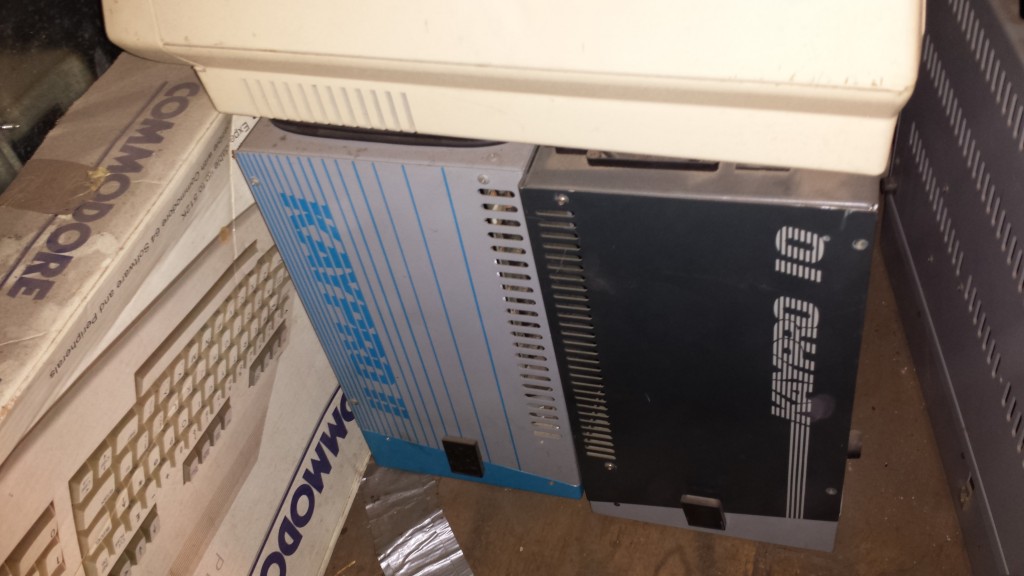
Another Kaypro II and a Kaypro 10.